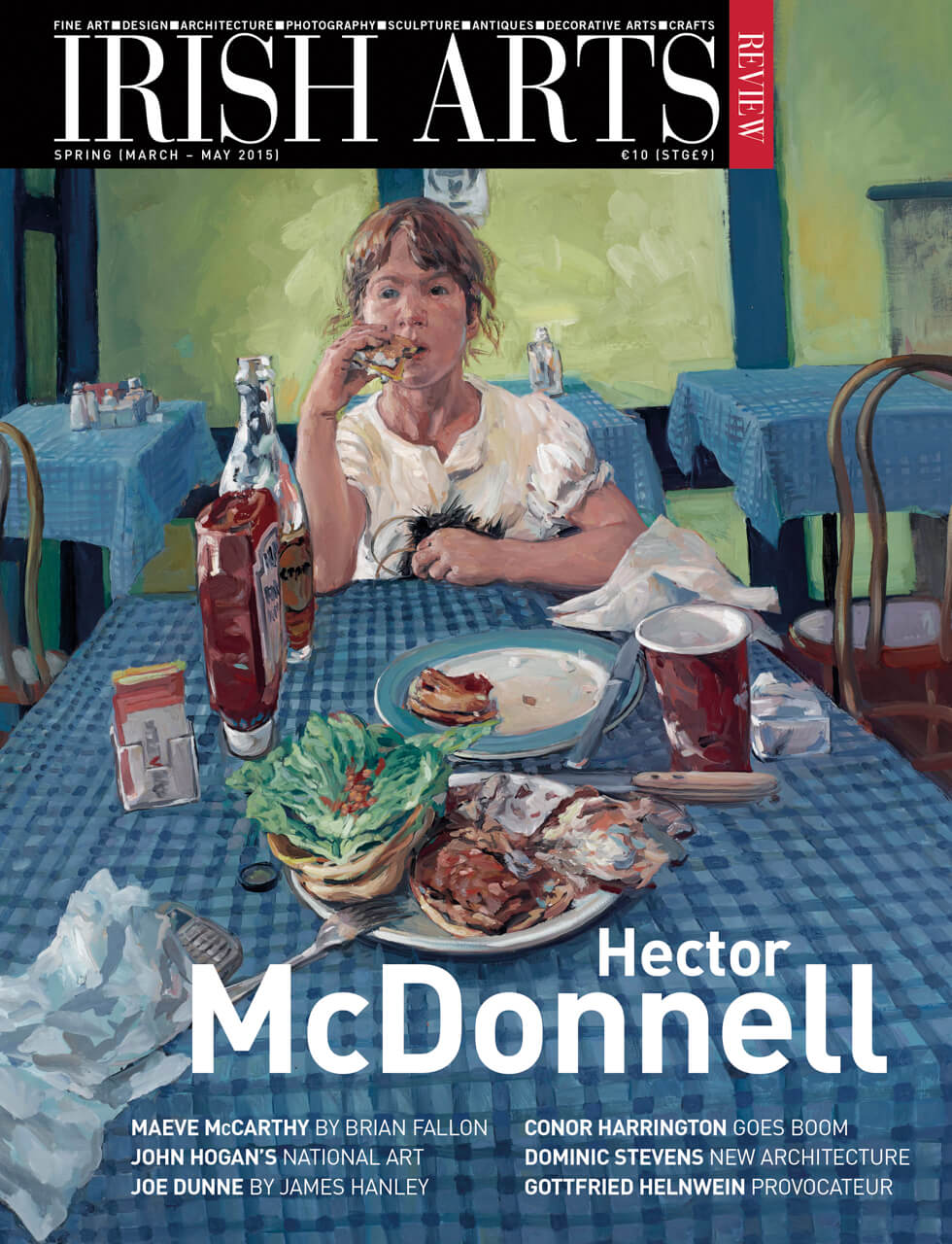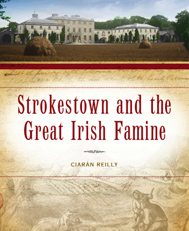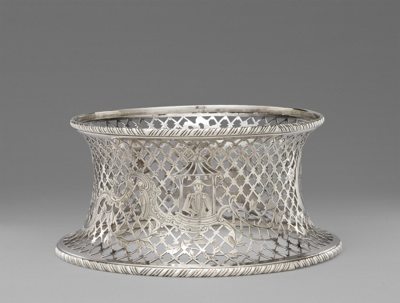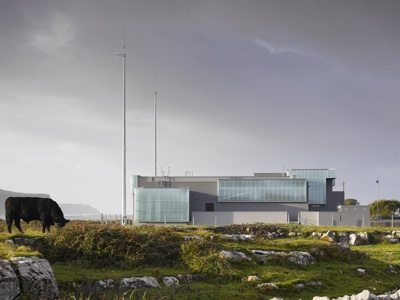

Strokestown and the Great Irish Famine
Ciarán Reilly
Four Courts, 2014
pp 228 fully illustrated p/b
€15.75 ISBN: 978-1-84682-554-5
IRELAND’S GREAT HUNGER MUSEUM
Quinnipiac University, 2015
pp 30 fully illustrated p/b
€11.95 (each folio) ISBN: 203-582-6500
There is still a sense, on this side of the Atlantic, that Irish Famine historiography is policed for anti-British or Mitchellite, anti-imperialist hyperbole. Yet a growing body of research supports radical perspectives such as in the first four handsome ‘folios‚’ from Quinnipiac University’s Great Hunger Museum in Connecticut.
Christine Kinealy’s Apparitions of Death and Disease, starts with omens: the population tripled since the 1741 famine; Malthus berating parliament in 1826; the mass poverty that primed the catastrophe. As Skibbbereen drew international notoriety from reports in the Illustrated London News (ILN), an 1847 Dublin gathering of Irish peers, MPs and landlords penned a highly critical ‘Memorial‚’ to government: relief policy had proved ‘incommensurate with the evil‚’; with ‘vast sums of money [spent] upon useless or pernicious works‚’. They condemned the massive food exports. But Government simply wound down the public works and soup kitchens, and left relief to the charities which, by autumn 1847, were spent. For Kinealy, the calamity occurred at the heart of a resource-laden Empire, in thrall to a ‘moralist‚’, providentialist, self-serving laissez-faire market ideology. Its Poor Law reforms threw tax burdens onto Irish landowners, many of whom resorted to mass evictions to consolidate estates; amidst profiteering by British and Irish merchants and local traders who indulged in widespread underweighting of sold food: what Naomi Klein might call ‘disaster capitalism‚’.
For Kinealy, the calamity occurred at the heart of a resource-laden Empire, in thrall to a ‘moralist‚’, providentialist, self-serving laissez-faire market ideology
In Tombs of a Departed Race, Niamh O’Sullivan declares ‘Famine – in so far as it is the product of political negligence in a time of plenty, and often leaving little trace of intentionality – is an atrocity as violent and reprehensible as warfare‚’. She mines the London pictorial newspapers of the 1840s, heeding LP Curtis‚’ thesis of 19th- century Anglo-Saxon scientific racist stereotypes of indolent, simianized, militant Paddies. Yet she spies a new ‘visual rhetoric‚’ in the ILN’s Cork artist-reporter, James Mahony who never dehumanized his subjects, or illustrated his worst verbal reports of gut-wrenching squalor and degradation.
O’Sullivan covers many thorny subjects: mothers snatching food from babes; a boy of 14 slitting the throats of two children for corn; reports of cannibalism. Meanwhile, exports included ‘large quantities of butter, corn, peas, rabbits, salmon, oysters, herring, honey and seed‚’. The British press carried illustrations of army relief efforts, one juxtaposed with an image of glowering, armed Irish brigands. Native violence recurred in scenes like A Nightly Occurrence (1847) where a strong farming family resists a gang of besieging ‘desperadoes‚’; or Mahony’s Conflict at Ballinhassig (Fig 6). The text reports a disciplined police force compelled to fire after a faction fight (killing 12 and injuring 22), but Mahony shows police firing into a scattering, terrified crowd.
Catherine Marshall’s Monuments and Memorials turns to art and the political nature of memorialisation. In place of ‘grand narrative‚’ traditional monuments, she favours ‘non-didactic‚’ solutions like Brian Tolles‚’ hyperreal, cantilevered Quarter Acre in Manhattan’s financial district; or Alanna O’Kelly’s installation, No Colouring Can Deepen the Darkness of Truth.
In the art market of the 1840s/50s, Irish artists depicting Famine scenes were deemed suspect, yet even after independence, only a handful of Irish monuments appeared before the sequicentenary’s explosion of statuary (like so much ‘sculptural bling‚’, Marshall hazards, were it not for the ‘well of loss‚’ they refer to). She seems unsure of John Behan’s state-commissioned Famine Ship at Murrisk, which ‘resurfaces‚’ in New York (a gift to the UN); and Rowan Gillespie’s famine figures on Dublin’s Custom House Quay, which credits their corporate sponsors. She notes Gillespie’s wraiths trudge past edifices of a capitalism which condemned legions to death and dislocation; while many stateside monuments affirm the ‘birth myth‚’ of Irish-America, confining the Famine to history.
The text reports a disciplined police force compelled to fire after a faction fight but Mahony shows police firing into a scattering, terrified crowd
Luke Gibbons‚’ Limits of the Visible posits a restrained ‘aesthetics of atrocity‚’ to tackle the enormity of ‘the state violence of the Great Famine‚’. He bemoans ‘the abandonment of justice to an abstract capitalist logic that worked its way implacably through the Irish countryside‚’; relegated relief to charity; and Ireland to a racialized protectorate under ‘an insensate colonial apparatus that gave the lie to any pretence of political legitimacy‚’.
He asserts that the ‘sensual‚’ appeal of the image often addresses only compassion, rather than universal justice; citing Edmund Burke who defended immutable human rights when condemning the East India company’s man-made apocalypse in Bengal. Justice, not pity, is the appropriate response – and obligation.
A substantial history by Ciarán Reilly threads through another new publication from the Strokestown House archive: illustrated with accounts, rent books, labour returns, maps and correspondence, including assertions, written after Major Denis Mahon’s assassination, that the man had given many guarantees of tenure. Reilly crafts a cautionary microcosm of a grossly-indebted estate which faced into the famine run-down and ‘teeming with paupers‚’, after the Revd Maurice Mahon was declared a lunatic in 1836.
Unrest had long simmered: arson, murder, hobbling of livestock; Molly Maguire actions; police raids and shootings. Major Mahon engaged Dublin firm Guinness & Mahon to effect mass clearances and assisted emigrations, causing more mayhem and mortality (over 700 of the 1,490 shipped out died en route). Reilly probes the bickering landowners, corrupt officials and shipping firms; the gangers and overseers on the public works (many involving lake drainages, revealing ancient relics which drew antiquarians); and locals who snapped up crops, animals and vacated land. All factors behind many locals‚’ wish to raze Strokestown to the ground in recent years. Paucity of space here does this richly bleak work a disservice.
Mic Moroney is a writer and freelance journalist.



